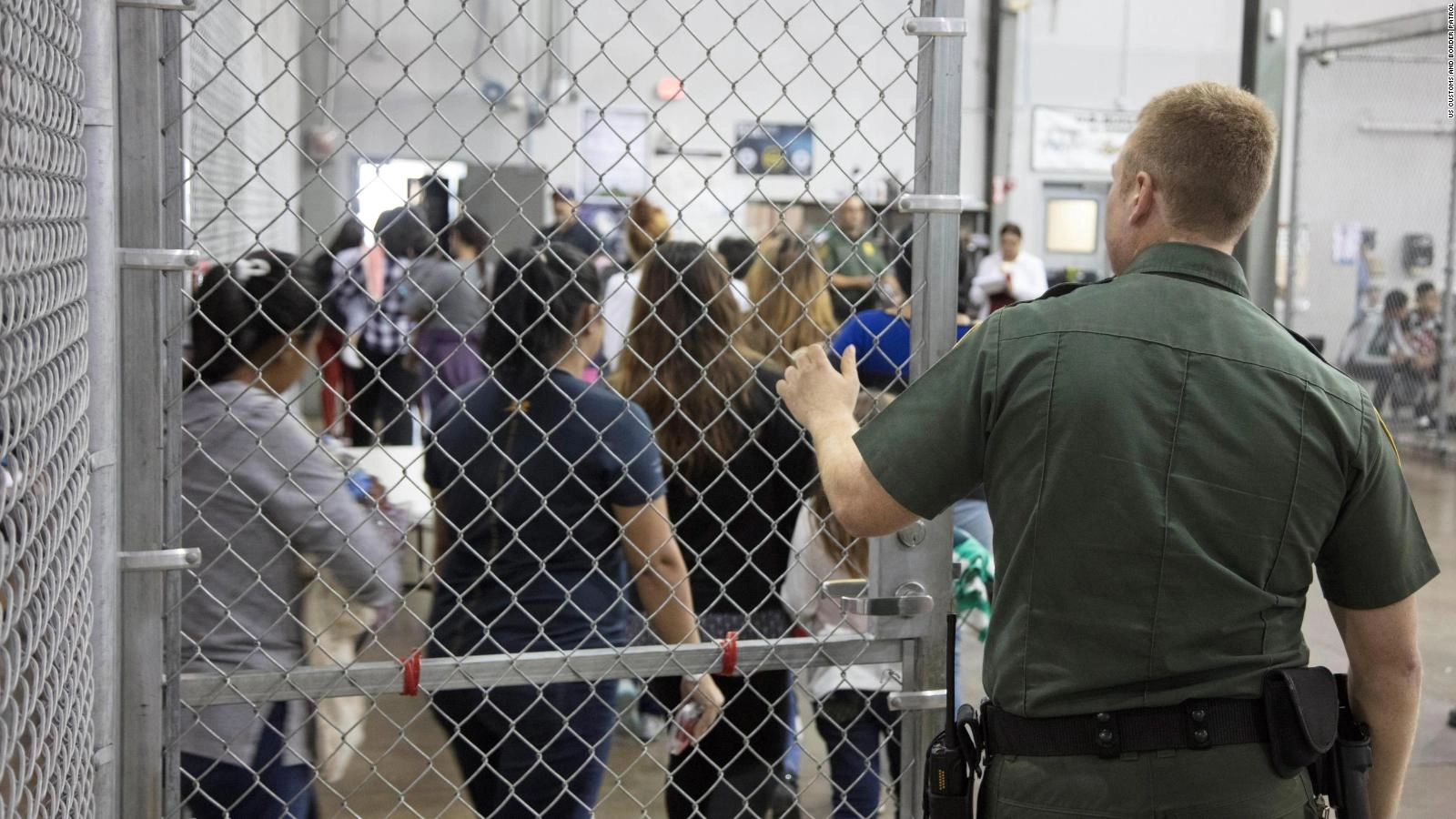Paper Presented at the Side Event “Human Rights Situation in USA: Immigration Detention Centers,” 47th Session of the United Nations Human Rights Council. July 2, 2021
Last July I gave testimony as a country conditions expert witness in a case involving a young Honduran man named Alejandro Lozano. Mr. Lozano was profoundly psychotic, diagnosed also with dissociative symptoms. According to the licensed clinical psychologist who assessed him, Mr. Lozano had not received adequate care in Adelanto, and his symptoms had worsened as a result of the neglect and abuse he had experienced during his imprisonment, to the point where he required a full-time conservatorship. Mr. Lozano’s mental illness was so severe that he did not understand that he was in prison at the Adelanto detention facility in San Bernardino County, California, run by GEO group, which in 2020 reported total revenues of $2.35 billion. Instead he believed he was in a school dormitory, and when his fellow inmates were attacked in June 2020 by officers in riot gear with rubber bullets and pepper spray for non-violently protesting an arbitrary lockdown requiring all inmates remain in their cells for at least 23 1/2 hours a day and the use of a hazardous disinfectant spray ostensibly for Covid protection that was harming patient health, he told his attorney that he had no idea why he had suffered the painful attack. Facing an Obama-appointed in-house judge with a 99% asylum denial rate, Mr. Lozano’s tenacious lawyer Katrina Bleckley nonetheless managed to win his case. However, he was released with no access to mental healthcare, and died shortly afterward while suffering from psychosis on the street, a free man, at the age of 26.
Mr. Martin Vargas Arellano, a Mexican national who had lived in the United States for over 50 years, since he was a young child, was also an inmate at Adelanto. Per attorneys who worked with him, he used a wheelchair, and had been diagnosed with serious health conditions, including schizophrenia, diabetes, hypertension, gout, cellulitis, hepatitis C, and arthritis, and had previously been unhoused. In Spring 2020 a federal court ordered him to be released following an ACLU lawsuit filed on behalf of him and five other detainees because continuing to detain him in the conditions present in Adelanto during the pandemic would be a violation of his constitutional rights, but conditioned his release on obtaining a guarantee of adequate shelter. Even though his non-profit immigration attorney, Margaret Hellerstein found him new housing and repeatedly requested parole on humanitarian grounds on the basis of the finding, and although U.S. Immigration and Customs Enforcement (or ICE) acknowledged he was a member of the Fraihat class of medically vulnerable persons legally eligible for release due to their extreme vulnerability to Covid-19, ICE refused to release him.
In December of 2020, like so many other inmates, Mr. Vargas contracted Covid-19 due to the lack of appropriate preventive measures in the Adelanto facility. In ICE custody, Mr. Vargas suffered further complications of Covid, including a stroke on March 3rd, 2021. ICE did not inform his lawyer Ms. Hellerstein, who was also his de facto next of kin given that he had no contact with relatives, of his stroke. Instead, on March 15th, Ms. Hellerstein discovered from a colleague at another non-profit that he had been listed as released. Mr. Vargas’s deportation officer refused to give Ms. Hellerstein any information about his whereabouts, and ICE released no information, failing to comply with their stated policy of posting a news release with relevant details regarding any detainee death within two business days.
It was only after Ms. Hellerstein, worried about Mr. Vargas’s safety, filed a missing persons report with the Orange County police on March 16th, that she was able to piece together what happened. In effect, after Mr. Vargas suffered an irreversible stroke, he was intentionally “released” to an outside hospital on March 5th, so that he would die there and not in ICE custody, which he did three days later. Not only did ICE’s medical mistreatment certainly contribute to Mr. Vargas’s untimely death; the agency intentionally hid the fact that he had died from his attorney, his consulate, and the U.S. public.
The experiences of Mr. Lozano and Mr. Vargas are not aberrations. Adelanto has been notorious for abusive conditions since it was converted from a prison to an ICE detention center in 2011, and Mr. Vargas was not the first Adelanto inmate to be released to a hospital to die in an apparent ICE effort to avoid accountability. The DHS Inspector General reported in 2018 on multiple violations of ICE detention standards at Adelanto and in 2019 documented violations there including misuse of segregation and solitary confinement, people improperly handcuffed and shackled, inadequate medical care, and nooses found in people’s cells. People detained in Adelanto have sued GEO Group for wage theft and forced labor. Currently built to hold 1,940 people, GEO Group’s efforts to expand the facility would make it the largest ICE detention center in the country.
Just as Mr. Lozano and Mr. Vargas’s experiences in Ad-elanto are not aberrations, neither is Adelanto an exception within the panorama of ICE detention, which is characterized nationwide by systematic abuse. ICE holds tens of thousands of people daily in the equivalent of pretrial detention, without appointed counsel and often without access to bond hearings. These individuals are held in one of more than 200 prisons, jails, and prison-like complexes rife with systemic racism and abuse. These facilities are largely operated by private companies and most are remote and isolated. Fueled by politics and the insidious consequences of campaign donations and lobbying by the private prison industry, the immigration detention system devalues the lives, health and safety of those jailed within its walls.
Getting caught in the immigrant detention dragnet means exposure to immeasurable harm and potentially death. The number of people who died in ICE custody in 2020 was more than double the prior year. Sexual assault, violent abuse, unsanitary conditions, lockdowns, and medical neglect and abuse including the forced hysterectomies that took place at the Irwin County Detention Center in Georgia, are commonplace in ICE jails. The opaque web of intentionally corrupted contracts and inspections breed impunity for ICE and its contractors. Independent medical experts have repeatedly found that approximately half of all deaths in ICE custody are attributable to medical negligence. Groups consistently document cases of medical neglect, so severe that people facing amputations take voluntary deportations rather than risk death in a county jail.
Sexual violence in ICE detention is also a tragically regular occurrence. A guard pleaded guilty to sexual assault against a Honduran woman in 2014 in the Berks family detention center in Pennsylvania, as one example. The Hutto facility in Texas, has an emblematic history of abuse, including multiple sexual assaults by guards and forced labor allegations which are still in litigation.
Public outrage over abuses like those at the Irwin facility, which were known1 to DHS and ICE well before a whistleblower and advocates made them public knowledge, have forced Biden’s DHS Secretary Alejandro Mayorkas to close a smattering of ICE detention facilities that were creating bad PR for the agency. Nonetheless, this largely symbolic action, which does not involve reparations or freeing the majority of unjustly detained foreign nationals in the shuttered facilities, does nothing to change the systematic human rights violations throughout the system as a whole.
Furthermore, Section 265 of U.S. Code Title 42, a provision of U.S. health law that permits the expulsion of individuals suspected of introducing a communicable disease, has created an entirely new level of danger for detainees since its implementation by the Trump administration in the context of the Covid pandemic on March 20, 2020. People in Title 42 proceedings are detained in Customs and Border Protection (or CBP) stations and detention centers, in conditions that are often even worse those foreign nationals who are otherwise detained, and are ineligible to seek protection or immigration relief. These individuals do not receive an A-number, which means that in contrast to regular detainees, there is no way for their families or attorneys to locate, communicate with, or advocate for them while they are detained. Many of these detainees, who have no right to an immigration judge or attorney, have been flown across the country to different facilities. This has made it even more difficult for their advocates and loved ones to track down their whereabouts, and the former often only regain contact with people subject to Title 42 proceedings after they have been “expelled” to Mexico or deported to their home country.
Title 42 has been applied in an anti-Black racially discriminatory fashion, above and beyond the inherent racial bias of the immigration detention system, which predominantly impacts brown and Black foreign nationals. While President Biden has mandated a review of this procedure, his administration continues to expel asylum seekers by the hundreds every day—including Haitian families and babies—back to dangerous and deadly conditions. Hundreds of organizations have called for these expulsions to end—as have leading public health experts and epidemiologists who found no basis in the government’s specious public health reasoning. Title 42 expulsions are based on the explicitly racist, ethnic-cleansing driven approach to border policy originally designed by Trump’s white supremacist advisor Stephen Miller. Miller proposed the policy’s implementation before the pandemic, and used the fear of COVID to implement the illegal program. Given the false pretext under which it continues to be implemented, Title 42 expulsion policy is illegal and violates the human rights of those subjected to it. The Biden administration is now complicit in those rights violations. Although the Biden administration has temporarily halted the expulsions of unaccompanied children, it continues mass expulsions at the same rate or higher than the Trump administration. At the same time the Biden administration temporarily halted the expulsions of unaccompanied minors, it also reinforced the Trump policy that Title 42 still applies to adults (and their accompanied children) while the order is under review.
The Biden administration has framed its immigration detention policy in terms of restoring civil rights to detainees following the flagrant violation of said rights by the Trump administration. Yet a coalition of immigrant rights groups expressed outrage after Biden released a Fiscal Year 2022 budget request of $8.4 billion for ICE and $16.3 billion for CBP. The budget continues to direct billions of taxpayer dollars toward agencies and private prison corporations which have a nearly 20-year pattern of fiscal mismanagement, separating families, and violating people’s civil and human rights. Biden’s budget includes funding for ICE to detain more than 30,000 adults in long-term detention centers—a significant increase from the current population and double the 15,000 people who were detained when he took office. And while Biden called for an end to private contracts being issued to run federal prisons housing individuals convicted of criminal offenses, this order does not apply to ICE detention centers. Detention for civil immigration enforcement is expensive and cruel. For many detainees, like Mr. Lozano and Mr. Vargas, it is also permanently harmful, and even deadly.
___________________
1 See linked video of a June 28, 2021 Inter-American Human Rights Commission hearing titled “Situación de #DDHH de personas migrantes y los centros de detención en #EEUU,” in particular the statement by Kathy Culliton-Gonzáles, Officer for Civil Rights and Civil Liberties at the U.S. Department of Homeland Security, and response from Azadeh Shahshahani, Legal & Advocacy Director of Project South.

